Imagine stepping into your backyard and feeling a wave of tranquility wash over you, as if you’ve discovered your personal oasis. Whether you’re a novice just dipping your toes into the world of outdoor design or a seasoned pro with a green thumb, our guide, “10 Relaxing Spots Ideas for Your Next Project,” is crafted to spark inspiration and provide a roadmap to create your dream retreat. Each idea is a stepping stone towards transforming your outdoor space into a haven of relaxation and joy.
With this list, you’ll uncover practical benefits that extend beyond aesthetics. From boosting your mental well-being to enhancing the value of your home, these outdoor spaces offer more than meets the eye. Dive in with confidence, knowing that each project is within reach, thanks to our easy-to-follow suggestions that blend creativity with practicality. Let’s embark on this exciting journey to bring to life the outdoor sanctuary you’ve always envisioned!
Incorporate Natural Privacy Screens
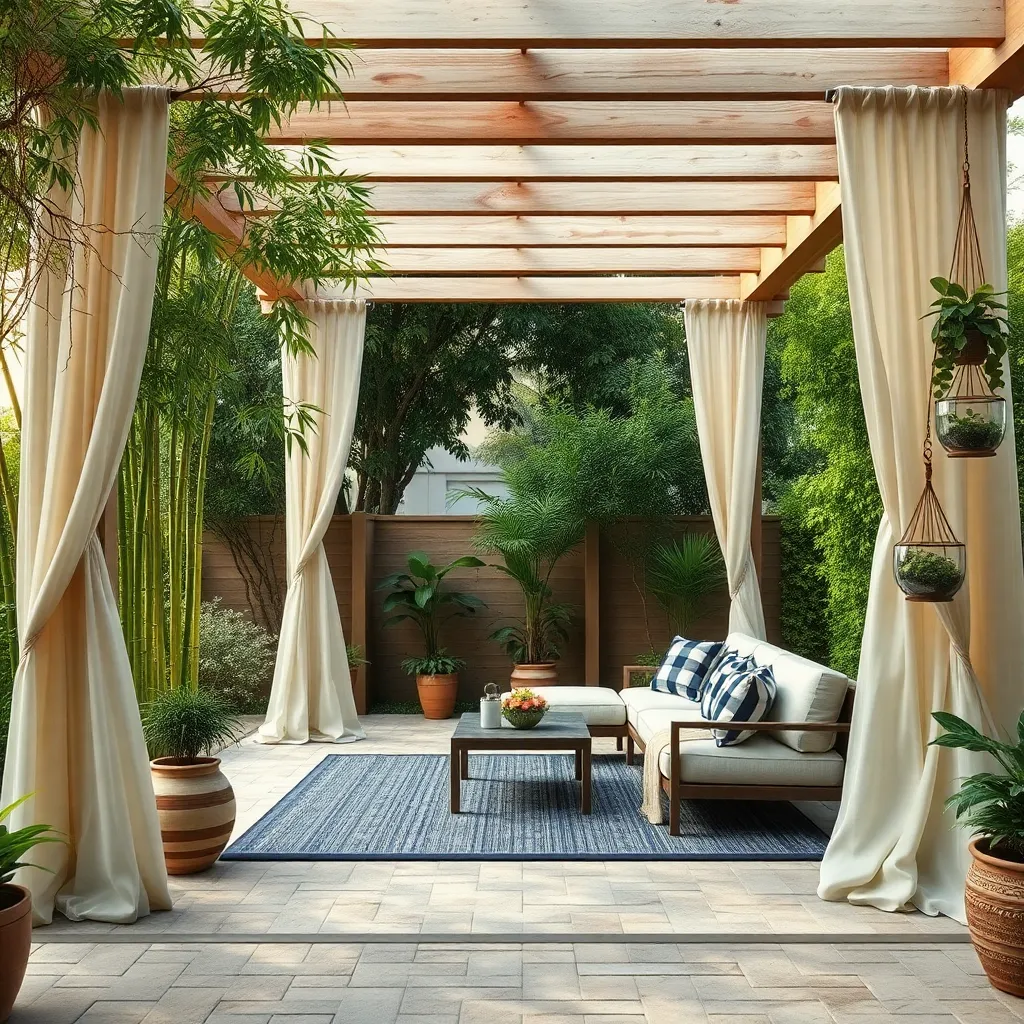
Consider using natural privacy screens to enhance the seclusion of your outdoor retreat. Planting fast-growing shrubs like bamboo or arborvitae can create a lush, green barrier that shields your space from prying eyes. For a more decorative approach, consider installing a trellis and training climbing plants such as clematis or jasmine to weave through it, offering both privacy and a beautiful, fragrant bloom.
When designing your natural privacy screen, it’s essential to account for growth size and maintenance needs. Choose plants that are suitable for your climate and ensure they have enough space to grow without encroaching on seating areas or pathways. For a more advanced touch, consider incorporating layered plantings with varying heights and textures, such as combining shrubs with taller grasses or small trees, to create depth and visual interest while maintaining a natural look.
Choose Comfortable Weatherproof Seating
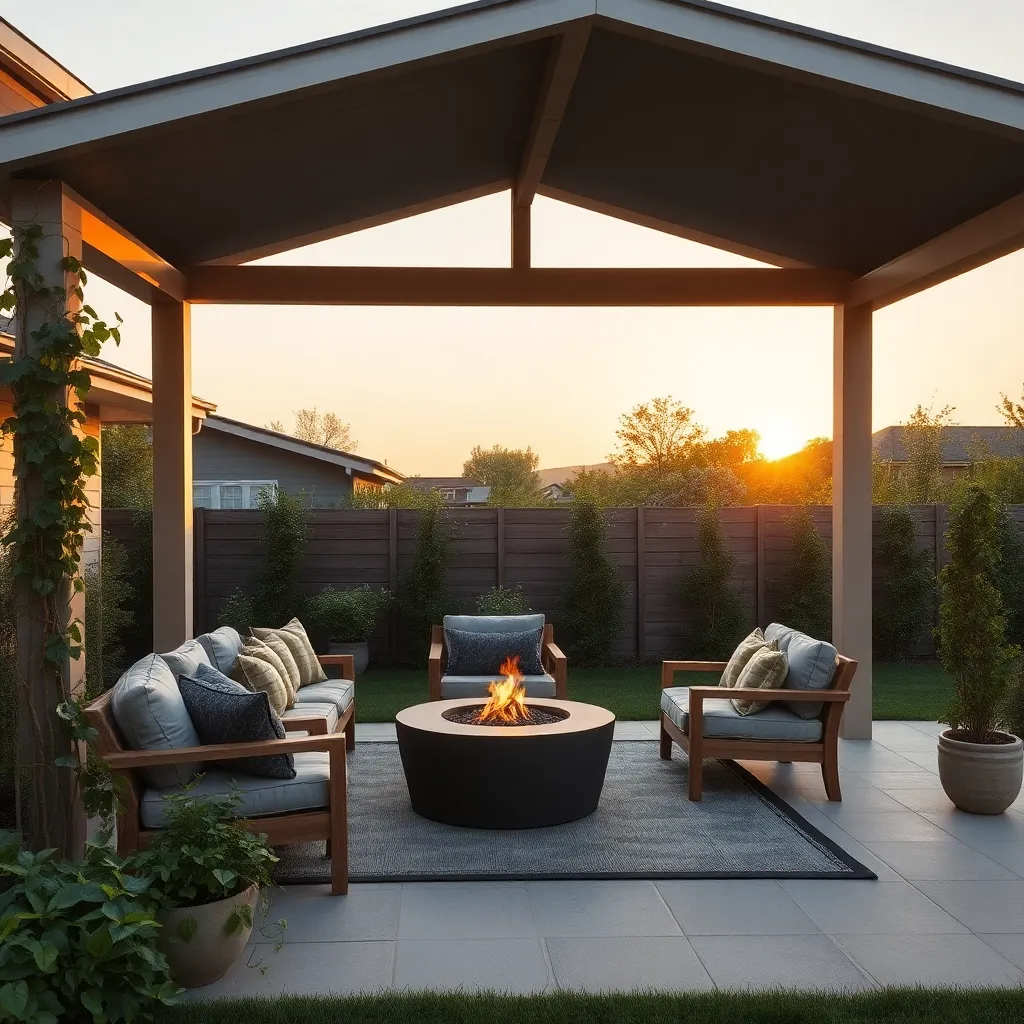
Choosing the right weatherproof seating is essential for creating a comfortable and inviting outdoor space. Start by considering materials that can withstand the elements, like teak, eucalyptus, or powder-coated metal, which are known for their durability and low maintenance. For a budget-friendly option, look for recycled plastic furniture that mimics the appearance of wood and offers excellent resistance to moisture and UV rays. Ensure your seating is both functional and aesthetically pleasing by selecting cushions with quick-dry foam and removable, fade-resistant covers.
For a more advanced touch, consider integrating seating with built-in storage to keep cushions and accessories protected when not in use. Customizing your seating area with modular pieces allows for flexibility, so you can rearrange your setup as needed for different occasions. When selecting cushions, opt for those with a minimum thickness of 4 inches to provide ample comfort. Finally, think about incorporating shade elements, like a pergola or retractable awning, to offer relief from the sun and extend the usability of your outdoor seating throughout the year.
Add Tranquil Water Features
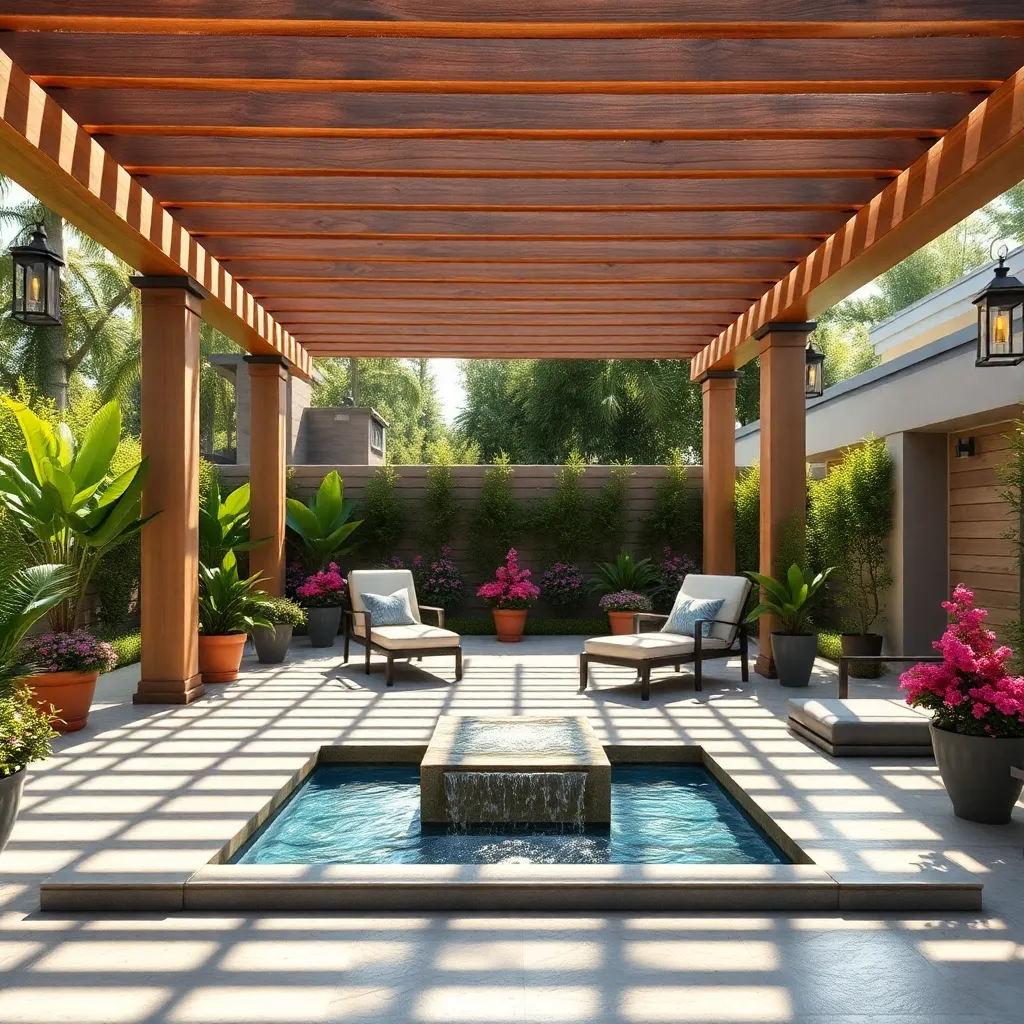
Introducing a tranquil water feature can transform your outdoor space into a soothing sanctuary. Consider adding a simple fountain or birdbath to your garden to create gentle, relaxing sounds. For those new to DIY projects, a pre-assembled fountain kit is an excellent choice, as it usually includes everything you need. Ensure your feature’s location has access to both water and electricity if needed, and choose materials that blend with your existing decor—natural stone and weather-resistant ceramics are popular options.
For those looking to take on a more advanced project, consider building a small pond with aquatic plants and fish. This requires careful planning, including digging a hole of at least 2-3 feet deep and lining it with a durable pond liner. Incorporate a small pump to maintain water circulation and prevent stagnation. Surround your pond with native plants and rocks to create a natural look, and consider adding submerged lighting for a magical effect during evening hours. Remember to regularly maintain your water feature to keep it clean and functioning smoothly.
Use Soft, Ambient Lighting
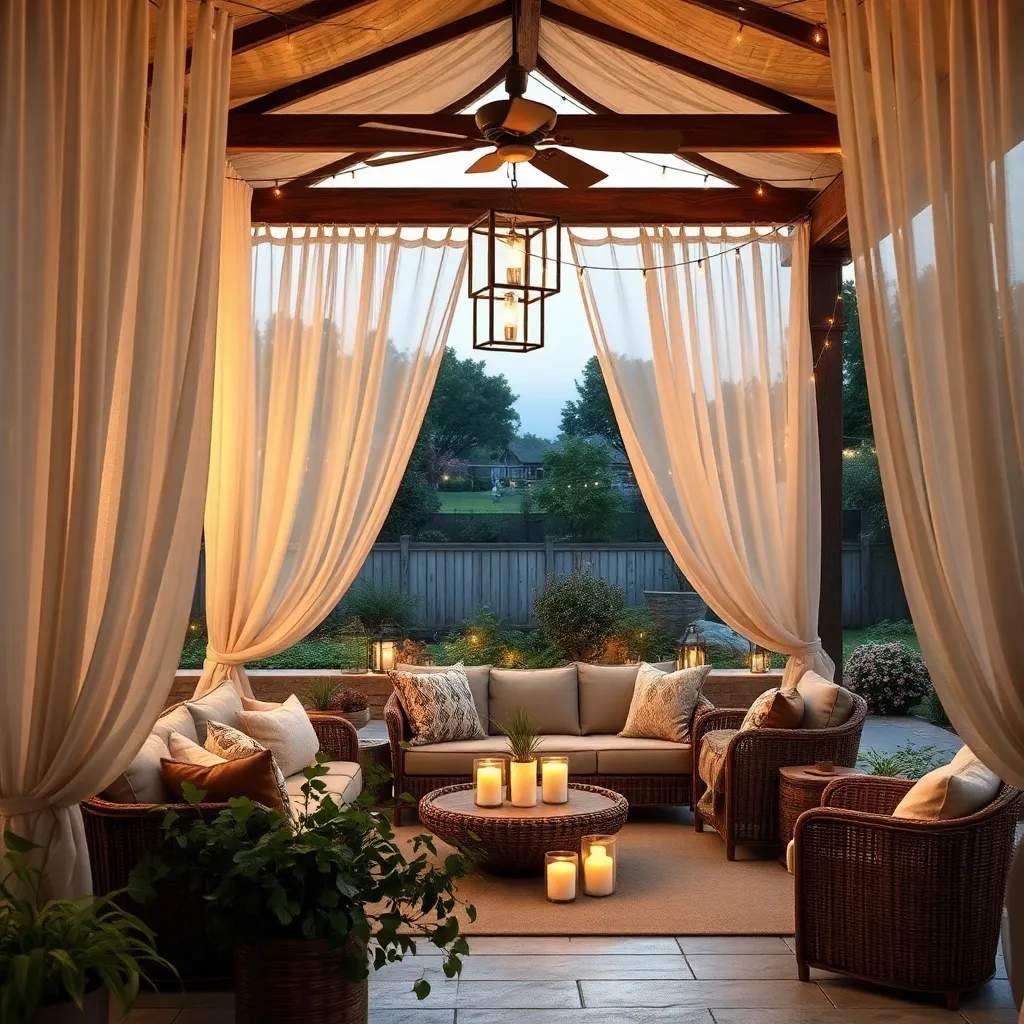
Incorporating soft, ambient lighting into your outdoor shelter can transform the space into a cozy retreat both day and night. Consider using string lights or lanterns to create a warm glow that enhances the natural surroundings. For a basic setup, string lights can be easily draped across beams or hung along the perimeter of your shelter. If you want to take it a step further, invest in solar-powered options that are both eco-friendly and easy to maintain.
For a more advanced lighting scheme, integrate recessed lighting into the shelter’s structure. Use LED strips under railings or along pathways to subtly illuminate the area without overpowering it. Choose dimmable lights to adjust the ambiance according to the occasion. Ensure all fixtures are suitable for outdoor use by checking for weatherproof ratings like IP65 or higher. This will ensure durability and safety, making your outdoor space both functional and inviting.
Create a Cozy Fire Pit Area
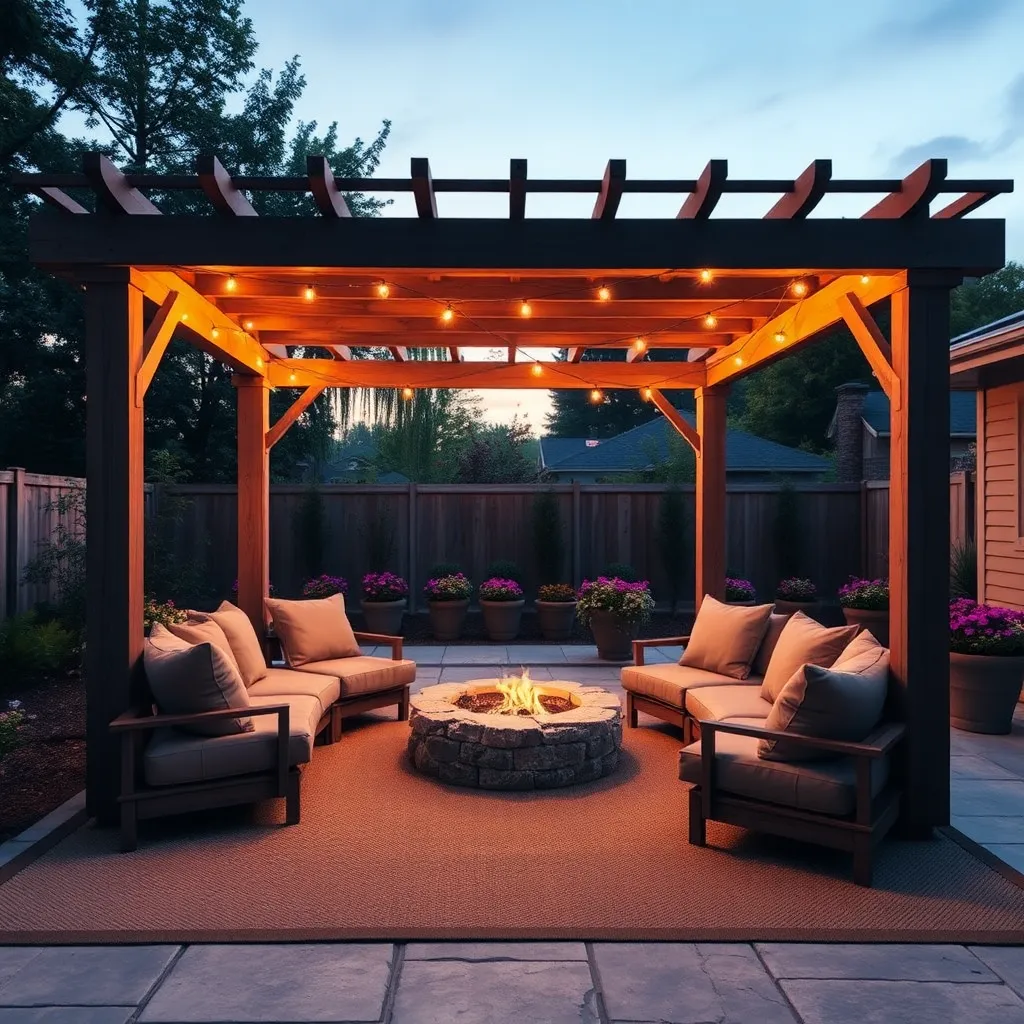
Transform your backyard into a haven by creating a cozy fire pit area. Start by selecting a suitable spot, ensuring it’s at least 10 feet away from your home or any overhanging trees for safety. Opt for a fire pit kit made of durable materials like steel or stone. These kits are easy to assemble and provide a professional look. For a more custom approach, consider building a fire pit with concrete pavers or bricks. Arrange seating in a semicircle around the fire pit using weather-resistant outdoor chairs or benches for a welcoming atmosphere.
Enhance the space with thoughtful design elements to elevate comfort and style. Lay down a gravel base around the fire pit to create a defined area and prevent weeds. For an inviting touch, add outdoor cushions and throw blankets in weather-resistant fabrics to keep guests warm on cooler nights. Consider incorporating elements like a small pergola or a few large outdoor umbrellas to provide shade during the day. Lighting is crucial, so string up some LED fairy lights or place solar-powered lanterns around the perimeter to create a magical ambiance as the sun sets.
Integrate Aromatic Plantings Nearby
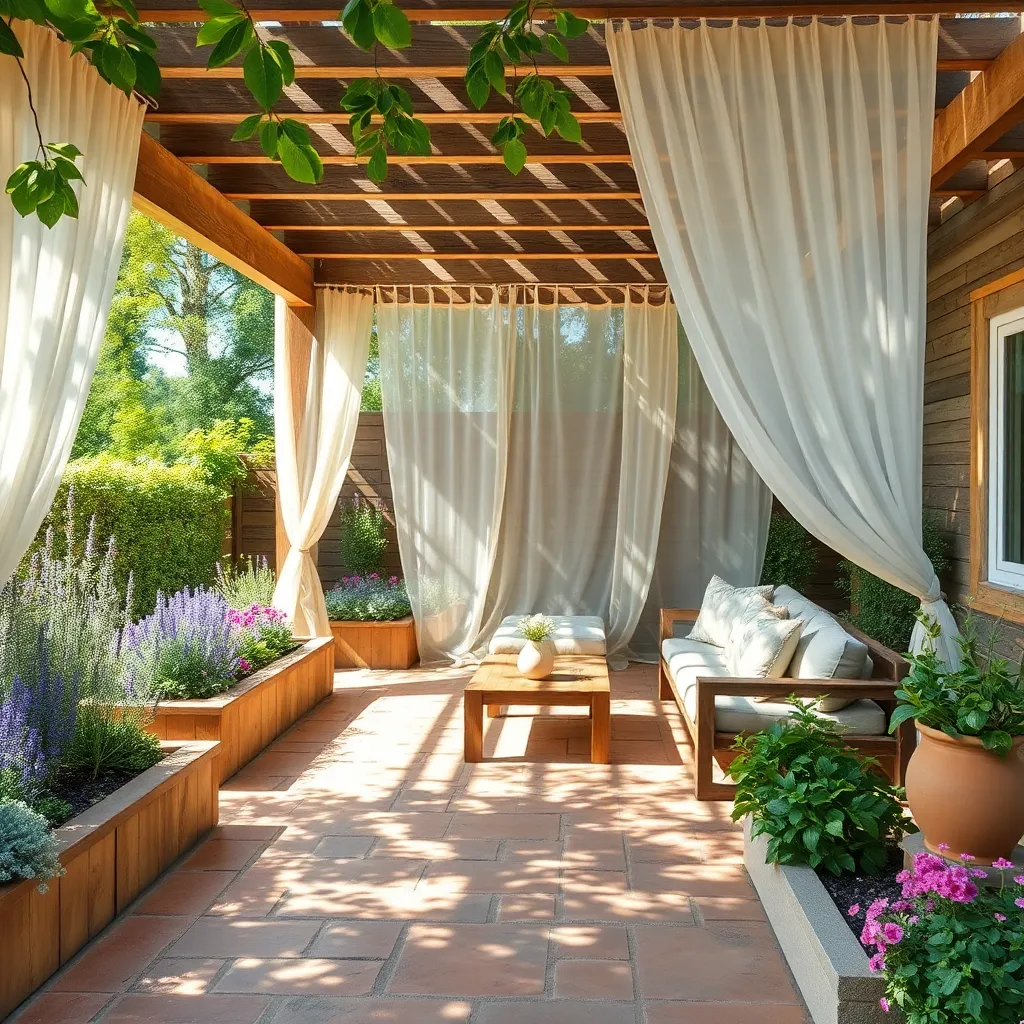
Consider integrating aromatic plantings nearby to enhance your outdoor shelter with delightful scents. Lavender, rosemary, and mint are excellent choices that are easy to grow and maintain. These plants not only add a sensory dimension to your space but also attract beneficial pollinators. Plant them in raised beds or containers for easy access and maintenance, and ensure they get enough sunlight by placing them on the sunny side of your shelter.
For a more immersive experience, arrange these aromatic plants in a pattern that complements your outdoor shelter’s design. Beginners can start with simple rows or clusters, while advanced gardeners might try creating a fragrant border around the seating area. Consider using natural materials like wood or stone to define planting areas, which adds an organic feel to the overall design. Regular trimming will help maintain their shape and encourage denser growth, ensuring your space remains a relaxing haven year-round.
Select Earthy, Calming Color Schemes
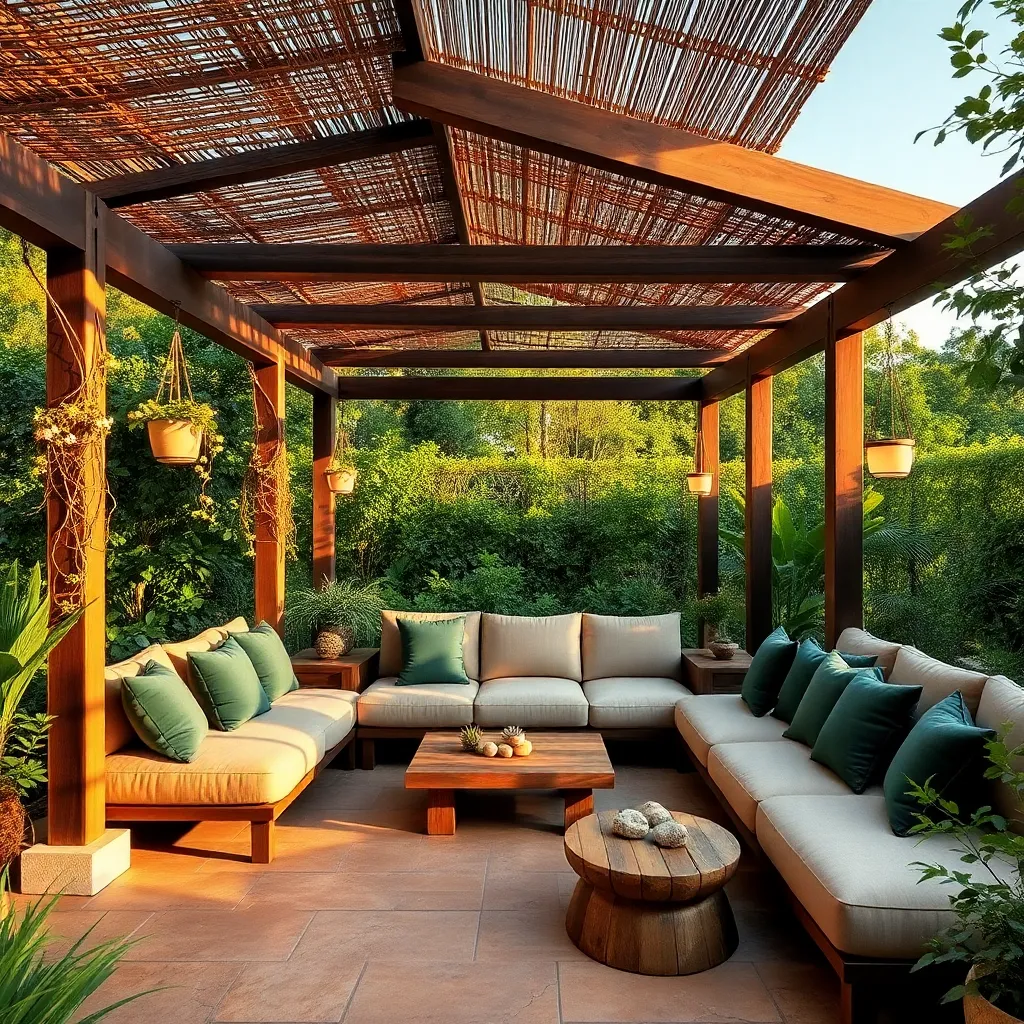
Choosing earthy, calming color schemes can transform your outdoor shelter into a serene retreat. Opt for natural tones like taupe, sage green, or terracotta that seamlessly blend with the landscape. Consider using weather-resistant paints or stains to ensure longevity. For those just starting, a simple coat of earthy-colored paint on wooden structures can make a significant impact. Advanced gardeners may explore different materials like bamboo or reclaimed wood, which naturally complement these hues and add texture.
To enhance the calming effect, incorporate textured fabrics and natural materials in your design. Use outdoor cushions or drapes in complementary shades such as muted blues or soft grays. These can be made from durable, weather-resistant materials like polyester or acrylic. For a touch of sophistication, more experienced designers might integrate stone or clay accents, which not only add to the earthy palette but also provide additional durability and elegance to the space. This attention to detail ensures your shelter remains a peaceful oasis for years to come.
Install Adjustable Shade Structures
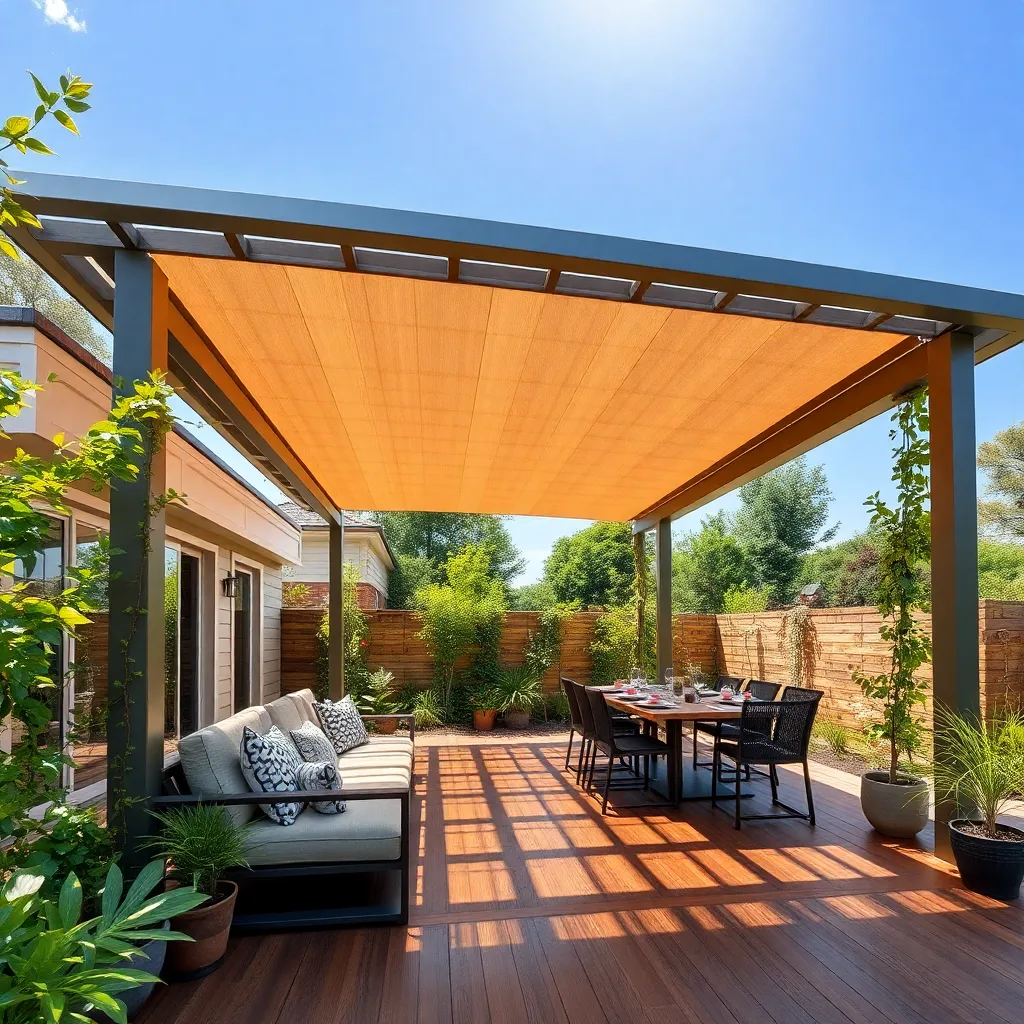
Transform your outdoor space into a versatile retreat by installing adjustable shade structures. These structures, such as pergolas with retractable canopies or adjustable louvered roofs, offer flexibility to adapt to changing weather conditions. For beginners, consider using durable materials like aluminum or treated wood, which ensure longevity and require minimal maintenance. Advanced gardeners can explore smart technology options that allow remote operation of the shades, integrating comfort and convenience at the touch of a button.
When designing your adjustable shade structure, focus on customization and functionality. Start by measuring your space accurately to ensure the structure fits seamlessly within your garden layout. For a basic setup, a simple pergola kit with adjustable slats could be a perfect choice, providing both sun and rain protection. More experienced DIYers might opt to install motorized louvered systems, which can be tilted to control light and airflow. Remember, these structures not only enhance comfort but also add aesthetic value, making your garden a year-round haven for relaxation.
Define Serenity Zones With Pathways
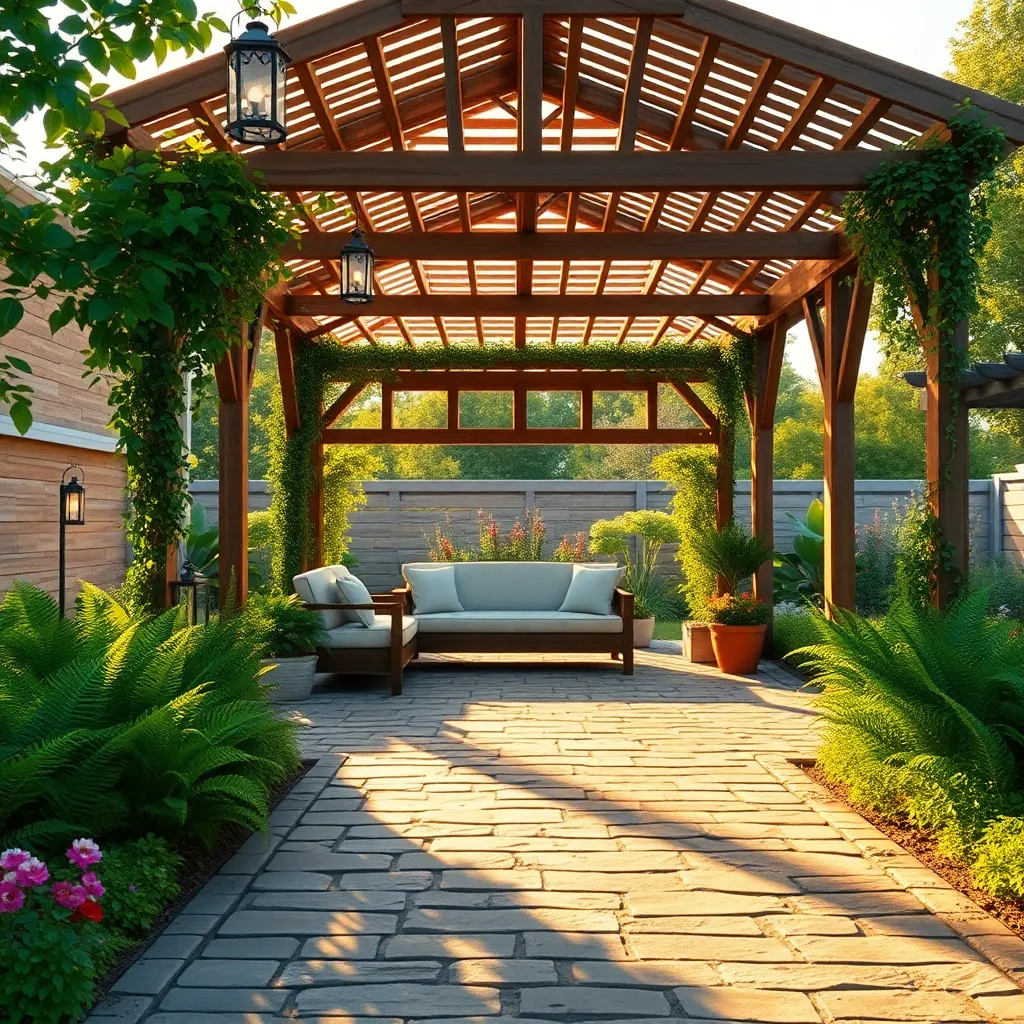
Designing pathways to define serenity zones in your garden can transform your outdoor space into a series of inviting retreats. Use materials like gravel, stone, or wood to create paths that guide the eye and encourage exploration. For beginners, consider using pea gravel for its ease of installation and natural appearance. More advanced gardeners might opt for flagstone or brick, which offer a more structured look. Ensure pathways are at least 3 feet wide to comfortably accommodate foot traffic and enhance accessibility.
Incorporate gentle curves in your pathways to introduce a sense of discovery and surprise within your garden. Accentuate these pathways with strategically placed plants or small outdoor sculptures to create focal points. Using solar-powered path lights ensures the way is both safe and visually appealing after dark. For a cohesive look, echo the materials of your pathways in other garden elements, such as edging or retaining walls, to harmonize the overall design. Whether you’re a novice or an expert, these pathways can seamlessly blend functionality with aesthetics, inviting you to unwind and enjoy your outdoor sanctuary.
Utilize Space-Saving Furniture Options
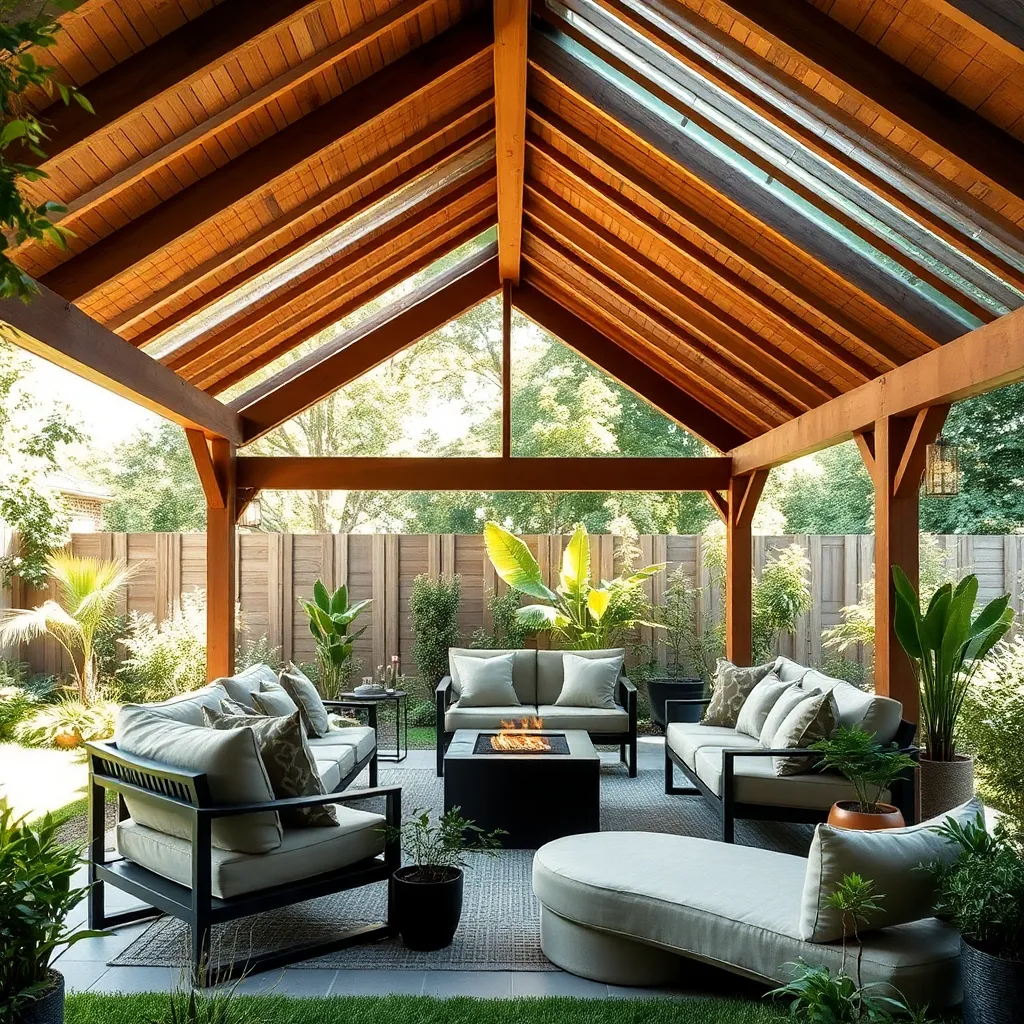
When planning your outdoor shelter, consider incorporating space-saving furniture to maximize your area without sacrificing comfort. Opt for pieces like foldable chairs and tables, which can be easily stored when not in use, or built-in benches that double as storage. Materials such as durable weather-resistant woods like teak or eucalyptus are ideal, ensuring longevity and minimal maintenance. Beginners can start with a simple bistro set that fits snugly into any corner, while more advanced projects might include custom-built seating that incorporates planters or storage.
For a more sophisticated setup, explore the versatility of modular furniture, which allows you to reconfigure seating arrangements as needed. This is particularly useful for entertaining, as you can effortlessly transition from a cozy nook to a spacious gathering area. Look for pieces with multi-functional designs, such as a bench that transforms into a table or a sectional that adapts to various layouts. To add a touch of style, choose cushions and covers in weatherproof fabrics, ensuring your setup remains inviting through all seasons.
Conclusion: Creating Beautiful Outdoor Spaces
In exploring ’10 Relaxing Spots Ideas for Your Next Project,’ we’ve journeyed through key concepts such as the importance of shared tranquility, the power of nature in fostering connection, and the role of creativity in strengthening bonds. We’ve also touched upon the magic of spontaneous adventures, the value of intimate settings, and the rejuvenating effects of quiet reflection together. Moreover, we’ve highlighted the necessity of unplugging, the joy of shared hobbies, the impact of cultural experiences, and the enchantment of revisiting cherished memories.
To elevate your relationship, choose one spot from the list and plan an outing this week. Engage in meaningful conversation, embrace the tranquility, and rekindle the spark that brought you together. For a lasting resource, save or bookmark this article now—it’s your go-to guide for nurturing your connection through serene and inspiring experiences.
Remember, the road to relationship success is paved with shared moments of peace and joy. By integrating these spots into your routine, you actively invest in a thriving, resilient partnership. Here’s to crafting a relationship that not only endures but flourishes with each adventure you embark on.
